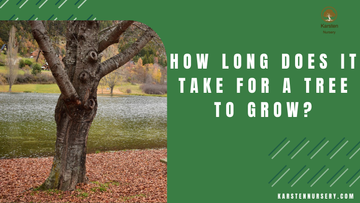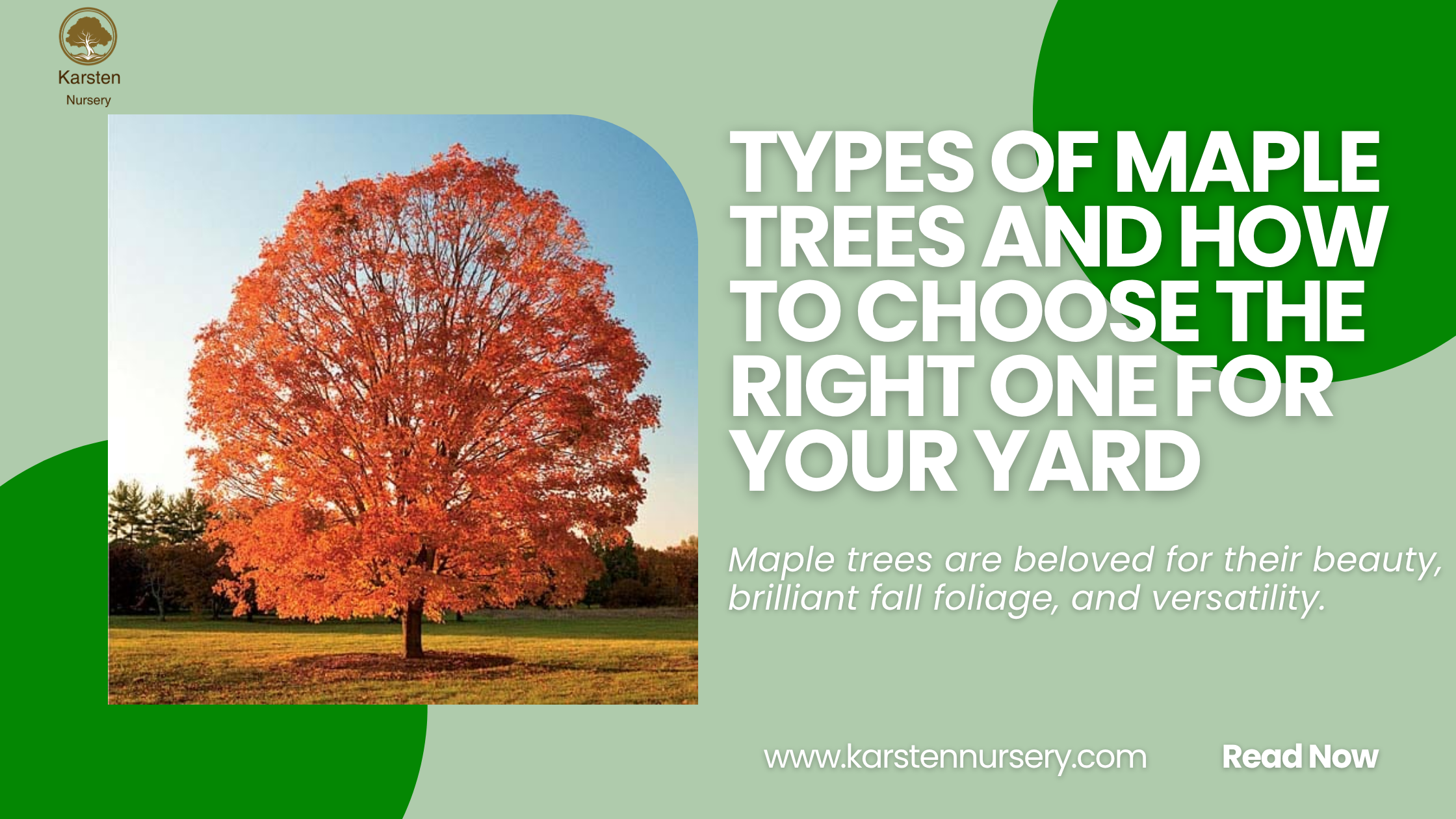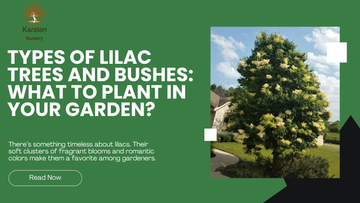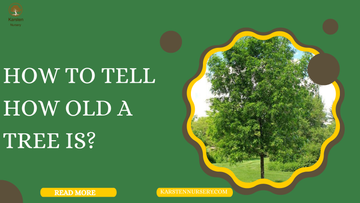
Have you ever planted a tiny seed and wondered when it would become a tall, leafy tree? Trees may grow slowly, but they’re full of surprises. Some grow quickly in just a few years, while others take decades to reach full size.
The time it takes depends on the type of tree, where it’s planted, and how well it’s cared for. So, if you're dreaming of backyard shade or planning a forest, then understanding a tree’s growth journey helps you plant with purpose and patience.
The Average Tree Growth Timeline
If you don't know how long does a tree take to grow, then you are in the right place. On average, most trees take 10–30 years to reach full maturity. But that's just scratching the bark.
The fastest growing trees, such as hybrid poplars, can shoot up to 5–8 feet per year, while hardwoods like oaks or maples take over 50 years to fully mature. What counts as mature” depends on what you’re after: shade, fruit, or timber.
Quick-Specs Box – Average Tree Growth
|
Factor |
Typical Range |
|
Average maturity time |
10–30 years |
|
Fast-growing species |
3–8 years (for height gain) |
|
Slow-growing trees |
40–100+ years |
|
Seed to sapling stage |
1–3 years |
|
Mature height range |
10–100+ feet |
If you're looking to add greenery to your space quickly, then focus on planting fast-growing species. But remember, faster isn’t always stronger.
The 7 Stages of a Tree’s Life
Understanding the stages of tree life gives a clearer picture of how long trees take to grow. There are seven main stages:
-
Seed – Every tree begins here. Viability depends on the type of tree seeds.
-
Germination – The start of life. With warmth, moisture, and care, the seed sprouts.
-
Seedling – Tiny, fragile, and vulnerable. Most tree deaths happen at this stage.
-
Sapling – Young trees with thin trunks, typically 1–5 years old.
-
Mature Tree – Capable of reproduction. Reaches full height potential.
-
Decline – Slower growth, often due to pests or age.
-
Snag/Death – A natural part of the tree life cycle. Even in death, they feed ecosystems.
Getting an understanding of this helps if you're growing trees from seed or curious about the growth stages of a tree in your backyard.
If that feels like too much effort, many gardeners opt to buy saplings or starter trees from reliable sources like Karsten Nursery.
Also read: What are the 4 Environmental Conditions Needed for Plant Growth?
Fastest Growing Trees: Want Height, Fast?
 The fastest growing trees are perfect for quick shade or privacy screens. Some of them are:
The fastest growing trees are perfect for quick shade or privacy screens. Some of them are:
-
Hybrid Poplar – Up to 8 feet/year
-
Weeping Willow – 6–8 feet/year
-
Lombardy Poplar – 5–6 feet/year
-
Silver Maple – 2–3 feet/year
-
Leyland Cypress – Great for hedges, fast-growing
These species show that you don’t always have to wait decades to enjoy a leafy canopy.
Quick-Specs Box – Fast-Growing Trees
|
Tree Species |
Growth Rate |
Use Case |
|
Hybrid Poplar |
5–8 feet per year |
Privacy, windbreak |
|
Weeping Willow |
6–8 feet per year |
Ornamental, shade |
|
Silver Maple |
2–3 feet per year |
Shade, visual appeal |
|
Leyland Cypress |
3–5 feet per year |
Screening, hedging |
Keep in mind that rapid growth can sometimes result in weaker wood or shorter lifespans.
Factors That Influence Tree Growth
Even if you pick a fast-growing tree, certain factors affect how fast do trees grow:
-
Soil – Nutrient-rich, well-draining soil is a must.
-
Water – Young trees need consistent moisture, but not soggy roots.
-
Sunlight – Most trees require 6–8 hours/day.
-
Climate – Native trees grow best in their original environments.
-
Pests/Diseases – Regular care prevents slowdowns.
By optimizing these, you can speed up the journey from sprout to shade.
How to Plant a Tree the Right Way?
 Whether you're planting tree seeds or digging a hole for a nursery-grown sapling, here's a quick-start guide:
Whether you're planting tree seeds or digging a hole for a nursery-grown sapling, here's a quick-start guide:
Quick-Specs Box – Tree Planting Tips
-
Best Time: Early spring or fall
-
Hole Size: 2–3x the root ball width
-
Depth: Keep trunk flare visible above soil
-
Watering: 1 inch/week for new trees
-
Mulching: 2–4 inches, away from the trunk
Planting properly is the first step toward healthy trees growing tall and strong.
Final Thoughts
Growing a tree is more than just a measure of time; it’s a journey of patience, care, and connection with nature. Whether you're planting a fast-growing shade tree or a slow-growing hardwood for future generations, each tree tells a story of resilience and growth.
With the right knowledge and a little nurturing, you can turn a single seedling into a thriving part of your landscape and legacy.
Discover fast-growing trees, native varieties, and expert planting advice, all in one place. Explore the carefully curated selection at Karsten Nursery. Visit us and shop now!
FAQs
Q. How long does a tree grow?
A tree continues to grow throughout its life, although its rate slows over time. Most trees reach their mature height in 10–30 years, depending on species and conditions. Even after maturity, trees may still expand in trunk diameter and canopy spread.
Q. How big should my plants be after 2 months?
It depends on the type of plant. For trees, seedlings might only reach 4–12 inches tall in the first two months. The fastest growing trees may grow faster, but most young trees focus on root development early on.
Q. How long does it take for a tree to mature?
Tree maturity generally takes between 10 and 30 years. However, species like oak or walnut may take 50 years or more to fully mature, especially if you're looking at timber value or seed production.
Q. How fast does a tree grow?
It depends on the species and environment. Fast-growing trees like hybrid poplars can grow 5–8 feet per year, while slower-growing hardwoods may add just 1–2 feet annually.
Q. Does it take 100 years for a tree to grow?
Some trees can live and grow for over 100 years, but very few take 100 years to grow to maturity. Trees like redwoods and oaks may keep growing for centuries, but functional maturity for shade or fruit often comes much sooner.
Q. How much will a tree grow in 10 years?
On average, a healthy tree may grow 10 to 30 feet in 10 years. Fastest growing trees can exceed 40–60 feet in that time, while slow growers might only add 5–10 feet.
Q. What is the average time to grow a tree?
The average time to grow a tree to maturity is typically 15–25 years. This depends on whether you're growing from seed or planting nursery saplings, plus local climate and care.
Q. What is the quickest tree to grow?
The quickest trees to grow include hybrid poplars, weeping willows, and silver maples. Some of these species can grow up to 8 feet in a single year under ideal conditions.
See Also Other Similar Blogs:
Types of Maple Trees and How to Choose the Right One for Your Yard




